Criminal penalty Life Role Serial Killer Name Wayne Williams | Country U.S. Victims 2-31 Date apprehended June 21, 1981 | |
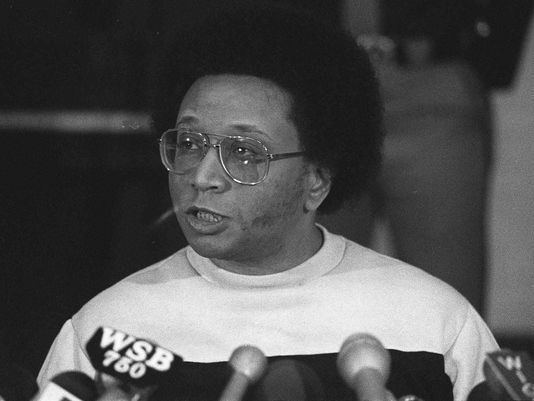 | ||
Other names The Atlanta MonsterThe Atlanta Child KillerThe Atlanta Child Murderer Span of killings July 21, 1979–May 22, 1981 Similar People Sidney Dorsey, Terry Hunter, John Wayne Gacy, Jesse Saunders, Gary Ridgway | ||
Criminal profilers pt 1 of 3
Wayne Bertram Williams (born May 27, 1958) is an American serial killer who was tried, convicted, and sentenced to life imprisonment in 1982 for killing two adult men. After his conviction, the Atlanta Police Department announced that Williams was responsible for at least twenty-three of the twenty-nine Atlanta murders of 1979–1981, also called the "Atlanta Child Murders". Williams continues to maintain his innocence.
Contents
- Criminal profilers pt 1 of 3
- Wayne williams a trained killer
- Biography
- Trial and conviction
- Aftermath
- Controversy
- References
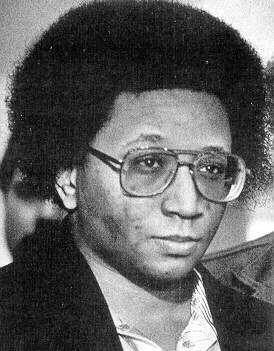
Wayne williams a trained killer
Biography
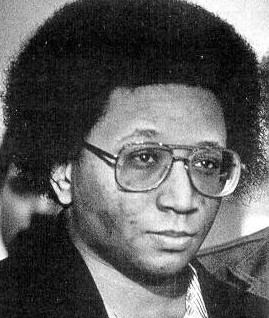
Wayne Bertram Williams was born on May 27, 1958 and raised in the Dixie Hills neighborhood of southwest Atlanta, Georgia to Homer and Faye Williams. Both parents were teachers. Williams graduated from Douglass High school and developed a keen interest in radio and journalism. Eventually he constructed his own carrier current radio station. He also began hanging out at radio stations WIGO and WAOK, where he befriended a number of the announcing crew and began dabbling in becoming a pop music producer and manager.
Trial and conviction
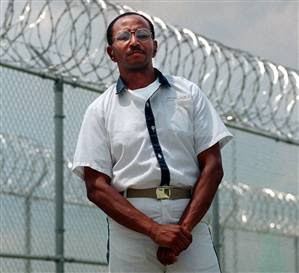
Williams first became a suspect in the Atlanta Child Murders in May 1981, when a police surveillance team, watching a bridge spanning the Chattahoochee River (a site where several victims' bodies had been discovered), heard a "big loud splash", suggesting that something had been thrown from the bridge into the river below. The first automobile to exit the bridge after the splash was Williams'. When stopped and questioned, he told police that he was on his way to a neighboring town to audition a young singer named Cheryl Johnson for his music business, but the phone number he gave them was fictional—as was, it later turned out, Cheryl Johnson.
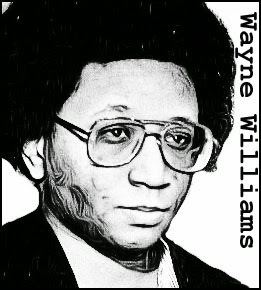
Two days later, on May 24, the nude body of 27-year-old Nathaniel Cater, who had been missing for three days, was discovered in the river. The medical examiner ruled he had died of "probable" asphyxia, but never specifically said he had been strangled. Police theorized that Williams had killed Cater, and that his body was the source of the "loud splash" they heard as his car crossed the bridge. Williams subsequently failed three polygraph tests, and hairs and fibers retrieved from another victim's body were found to be consistent with those from his home, car, and dog. Co-workers told police they had seen Williams with scratches on his face and arms around the time of the murders which, investigators surmised, could have been inflicted by victims during a struggle.
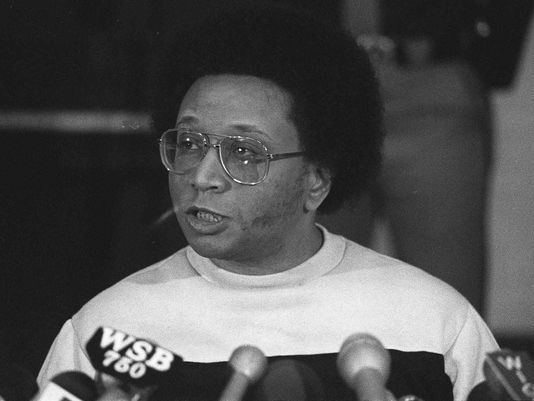
Throughout the several-week-long investigation, Williams taunted police officers staking out his parents' home with insults and jokes. During a press conference that Williams held outside his home to proclaim his innocence, he volunteered that he had failed the polygraph tests — a fact that would have been inadmissible in court. He was arrested on June 21, 1981, for the murders of Cater and 29-year-old Jimmy Ray Payne.
Williams' trial began on January 6, 1982 in Fulton County. During the two-month trial, prosecutors matched nineteen different sources of fibers from Williams' home and car environment—his bedspread, bathroom, gloves, clothes, carpets, dog and an unusual tri-lobal carpet fiber—to a number of victims. Other evidence included eyewitness testimony placing Williams with several victims while they were alive, and inconsistencies in his accounts of his whereabouts. Williams took the stand in his own defense, but alienated the jury by becoming angry and combative. After twelve hours of deliberation, the jury found him guilty on February 27 of the murders of Cater and Payne. He was sentenced to life imprisonment.
In the late 1990s, Williams filed a habeas corpus petition and requested a retrial. Butts County Superior Court judge Hal Craig denied his appeal. Attorney General Thurbert Baker said that "although this does not end the appeal process, I am pleased with the results in the habeas case," and that his office "will continue to do everything possible to uphold the conviction."
In early 2004, Williams sought a retrial once again. In the 146-page federal court filing, his attorneys argued that Williams should be retried because law enforcement officials covered up evidence of involvement by the Ku Klux Klan, and that carpet fibers linking him to the crimes would not stand up to scientific scrutiny. A federal judge rejected the request for retrial on October 17, 2006.
Aftermath
Neither Williams nor anyone else was ever tried for the murder of the boy, later identified as Curtis Walker, aged 13, whose body was dumped into Atlanta's South River in 1981. This was the same case which would lead to the stakeouts of Atlanta bridges by the Atlanta Police Department and the FBI that resulted in Williams becoming a suspect in May 1981 and his apprehension in the following month. Williams is serving his sentence at Telfair State Prison.
Controversy
Williams maintained his innocence from the beginning, and claimed that Atlanta officials covered up evidence of KKK involvement in the killings to avoid a race war in the city. His lawyers have charged that the conviction was a "profound miscarriage of justice" that has kept an innocent man incarcerated for a majority of his adult life and allowed the real killers to go free. In contrast, Joseph Drolet, who prosecuted Williams at trial, has stood by Williams' convictions, noting that after Williams was arrested, "the murders stopped and there has been nothing since."
Other observers have criticized the thoroughness of the investigation, and the validity of its conclusions. The author James Baldwin, in his essay The Evidence of Things Not Seen (1985), raised questions about Williams' guilt. Members of his community and several of the victims' parents did not believe that Williams, the son of two professional teachers, could have killed so many. On May 6, 2005, DeKalb County Police Chief Louis Graham ordered the reopening of the murder cases of four boys killed in that county between February and May 1981 that had been attributed to Williams. The announcement was welcomed by relatives of some victims, who said they believe the wrong man was blamed for many of the murders.
Graham, an assistant police chief in neighboring Fulton County at the time of the murders, said his decision to reopen the cases was driven solely by his belief in Williams' innocence. Former DeKalb County Sheriff Sidney Dorsey, who was an Atlanta homicide detective at the time, also said he believed Williams was wrongly blamed for the murders. "If they arrested a white guy," he said, "there would have been riots across the U.S." Fulton County authorities have not reopened any of the cases under their jurisdiction, however.
According to an August 2005 report, Charles T. Sanders, a white supremacist affiliated with the KKK—and an early suspect in the murders—once praised the crimes in secretly recorded conversations. Although Sanders did not claim responsibility for any of the deaths, he told an informant for the Georgia Bureau of Investigation in the 1981 recording that the killer had "wiped out a thousand future generations of niggers." Police dropped the probe into possible Klan involvement when Sanders and two of his brothers passed lie detector tests. The case was once again closed on July 21, 2006.
Former FBI profiler John E. Douglas wrote in his book Mindhunter that in his opinion, "forensic and behavioral evidence points conclusively to Wayne Williams as the killer of eleven young men in Atlanta". He added, however, that he did not find the evidence linking him to "all, or even most" of the child murders to be convincing.
DNA testing was performed in 2010 on scalp hairs found on the body of 11-year-old victim Patrick Baltazar. While the results were not firmly conclusive, the FBI's DNA laboratory listed odds of 130-to-1 against the hairs coming from any person other than Williams. The Baltazar case was included among ten additional victims presented to the jury at Williams' trial, although he was never charged in any of those cases. Dog hairs also found on Baltazar's body was tested in 2007 by the genetics laboratory at the University of California, Davis School of Veterinary Medicine, which found a 99-of-100 chance that the DNA sequence came from the Williams family's German shepherd. The FBI report stated only that "Wayne Williams cannot be excluded" as a suspect in the case.
A Department of Justice study, released in April 2015, concluded that numerous hair analyses conducted by FBI examiners during the 1980s and '90s "may have failed to meet professional standards". Defense attorney Lynn Whatley immediately announced that the report would form the basis for a new appeal; but prosecutors responded that hair evidence played only a minor role in Williams' conviction.
